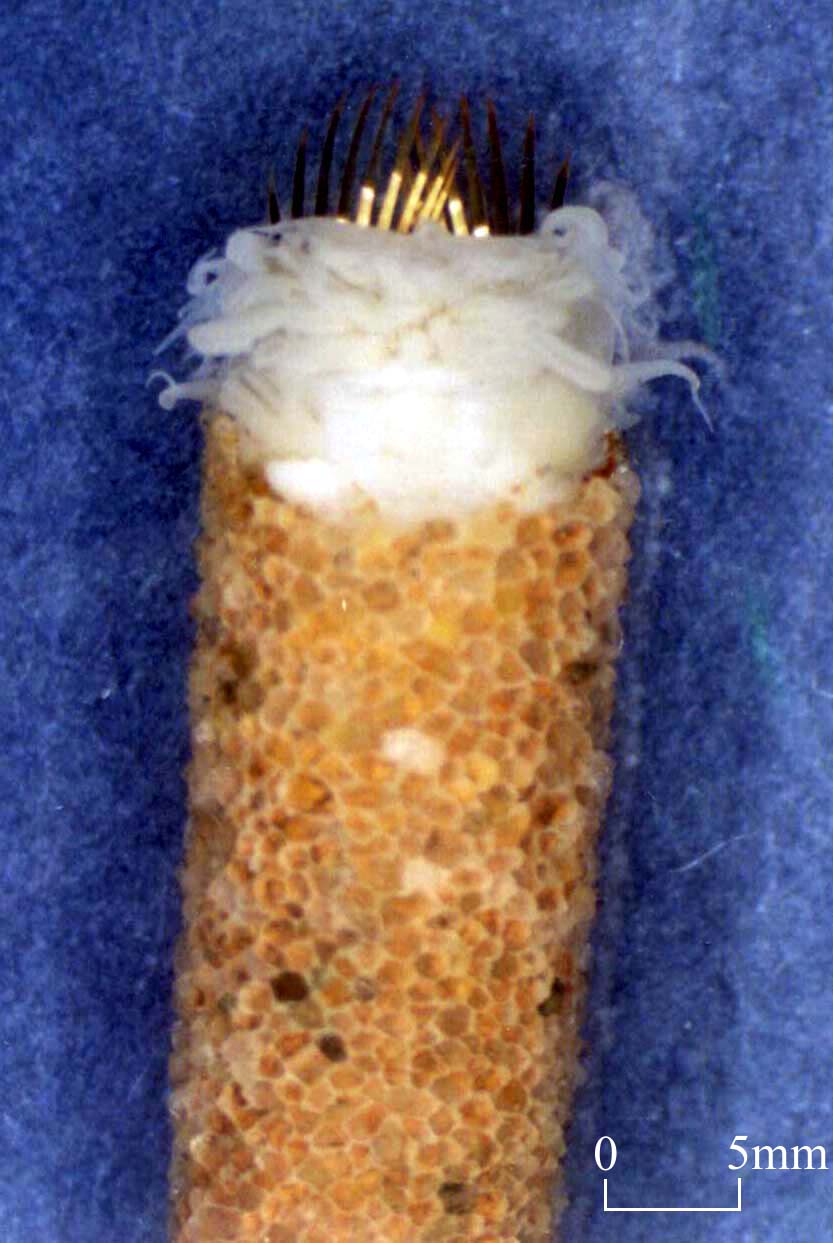Order Terebellida
Family Pectinariidae
Features |
| Body: |
trumpetshaped; divided into three regions:
thorax, abdomen and a posterior scaphe |
| Head: |
first setiger with a thick freshy
operculum and expanded, strong setae (paleae) forming a comb for digging |
| Prostomium: |
reduced |
| Eye: |
2 |
| Antennae: |
absent |
| Cirri: |
4 |
| Palp: |
2 |
| Pharynx: |
absent |
| Parapodium: |
uniramous or biramous |
| Setea: |
short capillaries, pectiniform uncini and
scaphal spines |
| (Fauchald 1977) |
Biological Notes
The characteristic of pectinariids
is the first setiger with strongly golden, coppery or brassy paleal setae which is used
for burrowing. Pectinariids are deposit feeders. They build conical and
chimney-shaped tube which is made of sand grains, sponge spicules, foraminiferan shells or
shell fragments. The tube is quite free, open at both ends and buried in the sand,
Only the open tip of the tube projects above the surface of the sand. The
respiratory current is drawn down the tube over the tail of the worm and along the body to
the gills. The mouth is surrounded by numerous grooved buccal tentacles for
gathering food particles buried in the sand and construction of the tube (Day 1967).
Genera and Species Reported in Hong Kong
Lagis bocki
Lagis koreni |

